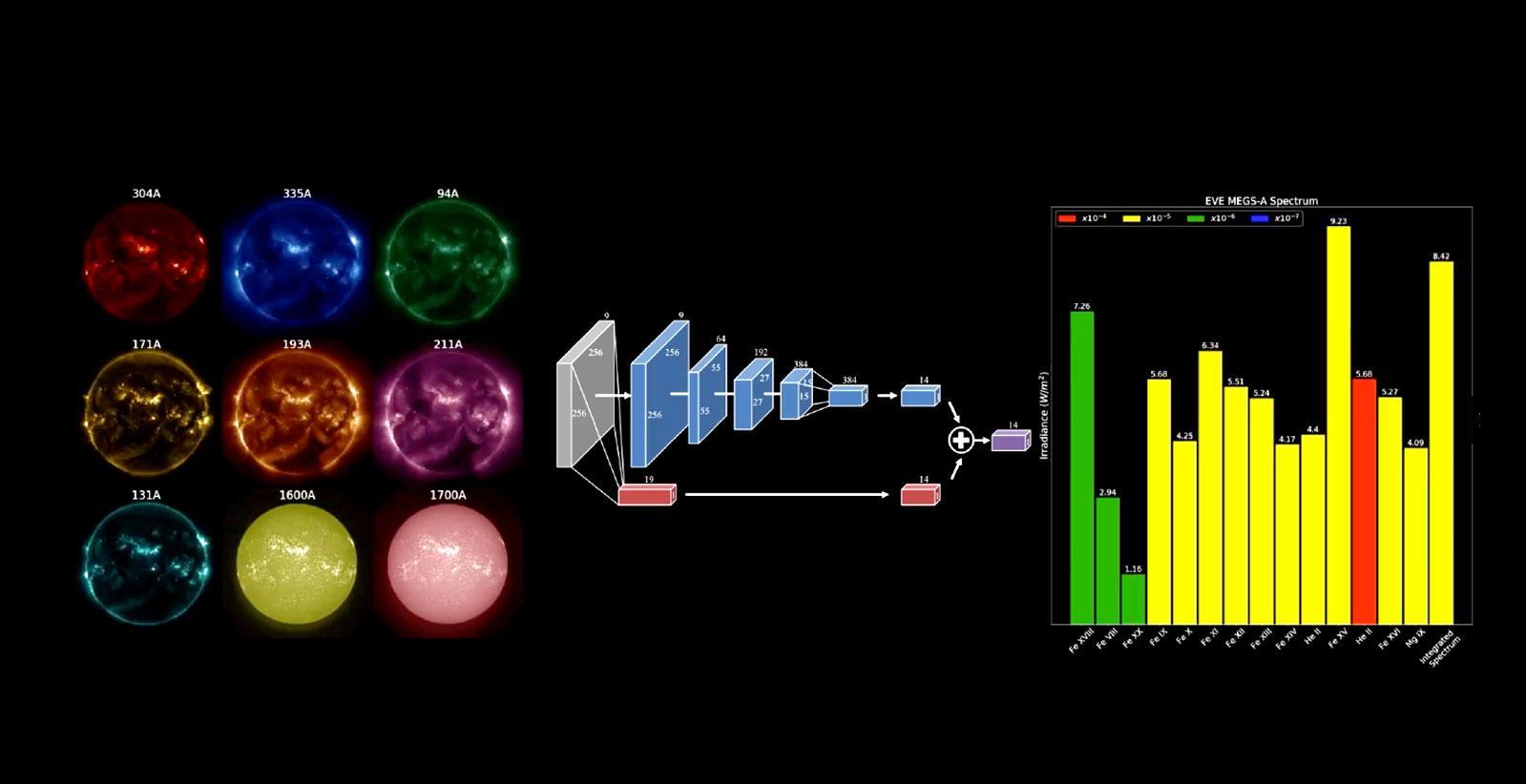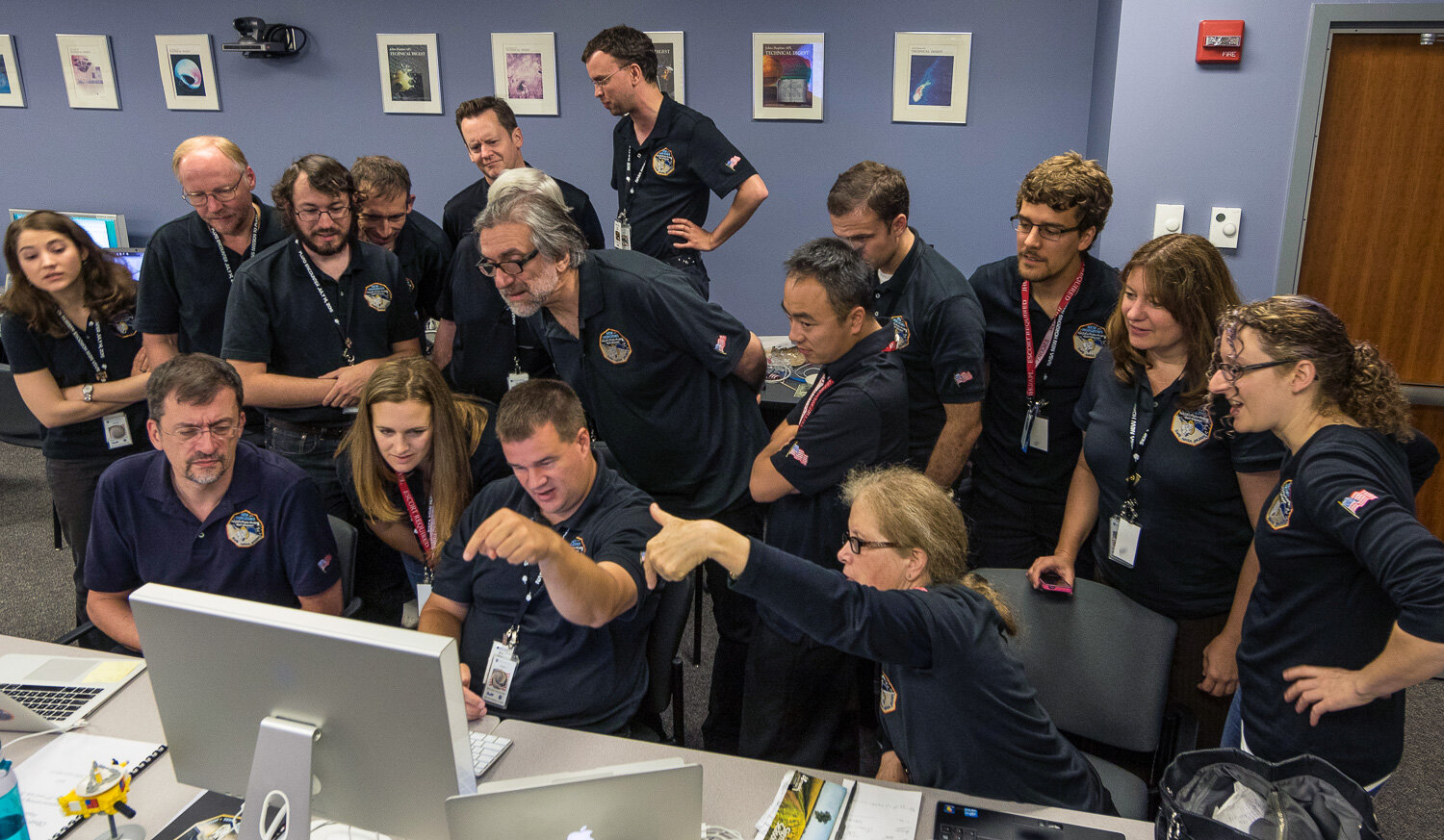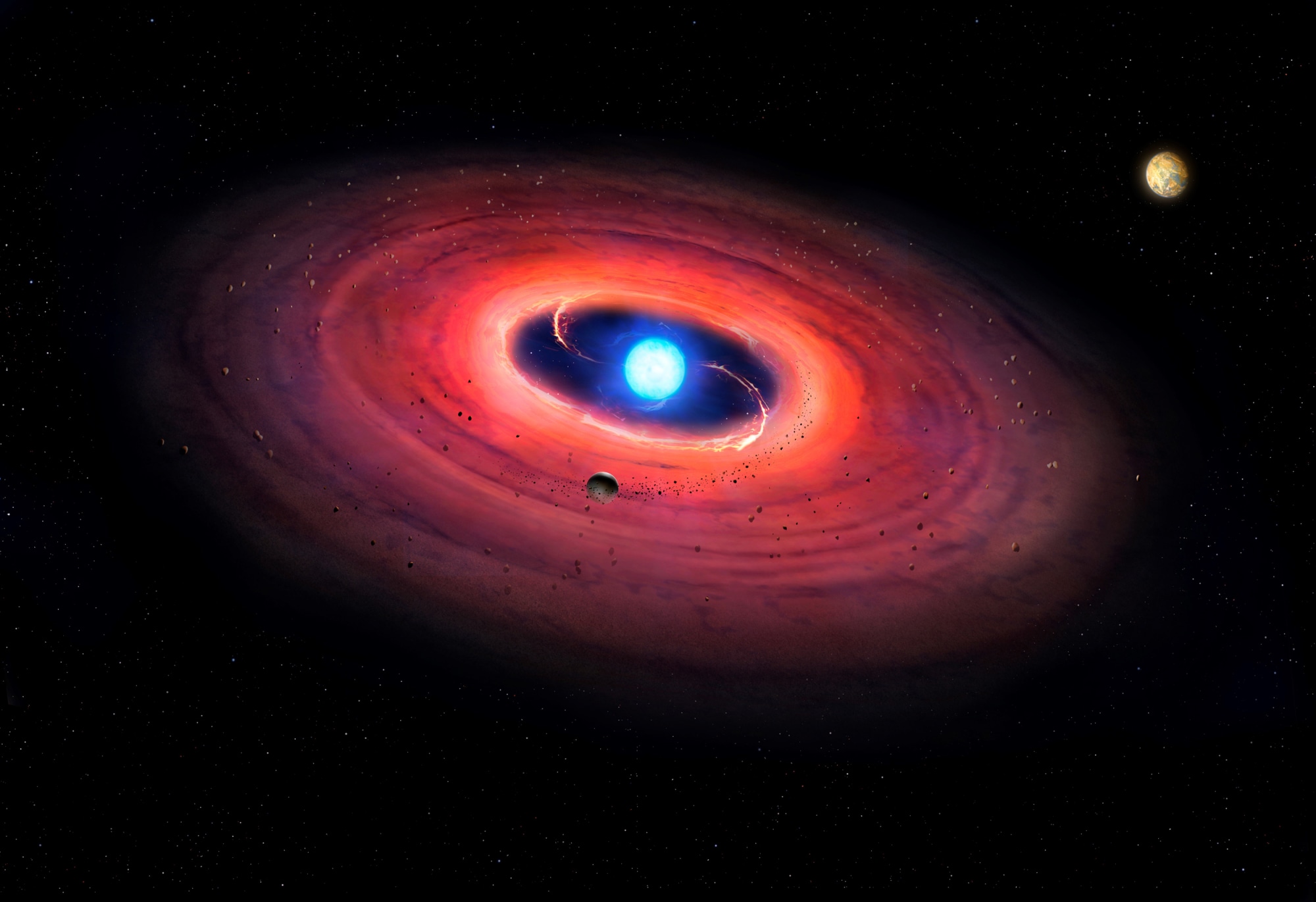
One of the 2019 NASA’s Frontier Development Lab (FDL) teams demonstrated a method of monitoring space weather using deep learning. The new approach allows researchers to virtually monitor the Sun’s extreme ultraviolet (EUV) irradiance – solar flares -- which occur a few times a year and can seriously disrupt communications on Earth. FDL is a partnership between NASA Ames Research Center, the SETI Institute, and private sector and space agency partners, including Google Cloud, Intel AI, IBM, Kx Lockheed Martin, Luxembourg Space Agency, NVIDIA, Canadian Space Agency, HPE, and Element AI. During an eight-week research accelerator over the summer of 2019, interdisciplinary teams applied AI and machine learning to the challenges of space science and exploration. HPCwire quoted Alexander Szenicer, whose team tackled the challenge of developing an AI model using the Solar Dynamics Observatory (SDO) to predict solar spectral irradiance:
“Our research shows how a deep neural network can be trained to mimic an instrument on the Solar Dynamics Observatory (SDO),” said team member and co-author Alexander Szenicer. “By inferring what ultraviolet radiation levels that sensor would have detected based on what the other instruments on SDO are observing at any given time, we demonstrate it is possible to increase scientific productivity of NASA missions and to increase our capability to monitor solar sources of space weather.”
The breakthrough research appeared in Science Advances.
- HPC Wire: NASA Uses Deep Learning to Monitor Solar Weather
- SETI.org: NASA Frontier Development Lab Uses Deep Learning to Monitor the Sun’s Ultraviolet Emission
- Science Advances: A deep learning virtual instrument for monitoring extreme UV solar spectral irradiance
 TESS and Technosignatures
TESS and TechnosignaturesTESS, NASA’s Transiting Exoplanet Survey Satellite, will expand its planet-hunting mission to include the search for extraterrestrial technology. Researchers with Breakthrough Listen will collaborate with TESS scientists to search for technosignatures – indicators of technology - on other worlds. Andrew Siemion, Bernard M. Oliver Chair of SETI at the SETI Institute, spoke about the potential of more in-depth research into technosignatures, as quoted by Space.com:
"The discovery by the Kepler spacecraft of Boyajian's Star, an object with wild, and apparently random, variations in its light curve, sparked great excitement and a range of possible explanations, of which megastructures were just one," Andrew Siemion, leader of the Breakthrough Listen science team at the University of California, Berkeley's SETI Research Center, said in the same statement.
"Follow-up observations have suggested that dust particles in orbit around the star are responsible for the dimming, but studies of anomalies like this are expanding our knowledge of astrophysics, as well as casting a wider net in the search for technosignatures," Siemion added.
Thanks to continued efforts by the SETI Institute and others, the search for technosignatures is starting to be understood as a serious aspect of astrobiology and space exploration. Jill Tarter, SETI Institute co-founder and Chair Emeritus for SETI Research, spoke to AFP about the shift:
"We've spent a lot of time over the years trying to distance ourselves from pseudoscience and UFOs," said Tarter, 75, the Chair Emeritus for SETI Research at the SETI Institute in California, founded in 1984 and funded by Silicon Valley magnates including the late Paul Allen.
"We've done the scientific exploration that we're engaged in a way that scientists in other disciplines do their work, and we published the papers and we've gone through the peer reviews, and we built interesting instrumentation," she continued.
"So I think that it is far more credible today than it once was."
Observations will take place using Listen's primary facilities, which include the Green Bank and Parkes Telescopes, MeerKAT, and the Automated Planet Finder. Partner facilities will also participate, including VERITAS, NenuFAR, FAST, the Murchison Widefield Array, LOFAR stations in Ireland and Sweden, Jodrell Bank Observatory and e-MERLIN , Keck Observatory, the Sardinia Radio Telescope, and the SETI Institute's Allen Telescope Array .
- Space.com: NASA's Planet-Hunting Probe Joins the Search for Intelligent Aliens
- AFP: With NASA telescope on board, search for intelligent aliens 'more credible'
- CNET: Alien hunters, NASA team up to scan planets for signs of intelligent life
- DailyMail.com: NASA joins forces with alien hunters to search for life on exoplanets
- SETI.org: Breakthrough Listen to Collaborate with Scientists from NASA’s Transiting Exoplanets Survey Satellite (TESS) Team to Look for Signs of Advanced Extraterrestrial Life
 The Inscrutable Side of Pluto
The Inscrutable Side of PlutoIn 2015, New Horizons flew by Pluto, capturing detailed images of the distant dwarf planet for the first time in history, but only one side. Due to the speed at which New Horizons was traveling, and the time it takes for Pluto to rotate, the spacecraft had already zoomed away by the time the far hemisphere would be visible. The spacecraft was able to collect some images during the approach, while it was still a great distance away. A new study, co-authored by SETI Institute research scientist Oliver White, presented the first-ever compilation of low-resolution data with geological analysis. White explained the research to Gizmodo:
Oliver White is a co-author of the study and a planetary scientist at the SETI Institute. White said the scale of the images taken of the far side "ranges from kilometers per pixel to tens of kilometers per pixel." He added that at this scale, "variations in surface brightness are the best indicator of variations in surface geology, so in this sense the mosaic can be said to be 'higher quality' than what we had before." He concluded by saying that it was essential for the geological mapping shown in the paper.
White emphasized that the data was analyzed extensively, and a return mission would be necessary to understand more about the far side of Pluto:
“This paper is kind of intended to be THE paper on Pluto’s far side using New Horizons data,” White said. “I think we’ve squeezed pretty much everything out of the data that’s available to us, so only data from a future mission to Pluto that resolves the far side—indeed, all of Pluto’s surface—to a better degree will really allow us to meaningfully refine our ideas.”
 Ross Beyer and Charon’s “Wonky” Plains on Spacepod
Ross Beyer and Charon’s “Wonky” Plains on SpacepodRoss Beyer, a senior research scientist at the SETI Institute, appeared on Spacepod to discuss new theories about how the plains of Charon formed. Charon is a satellite of Pluto, visited for the first and only time by the New Horizons spacecraft in 2015. Listen in to hear about this distant and mysterious world.
You can also watch a recording of Beyer presenting at the Silicon Valley Astronomy Lecture Series at Foothill College, which is co-sponsored by the SETI Institute.
- Spacepod: Episode 162: Charon's surprises with Dr. Beyer
- YouTube: Silicon Valley Astronomy Lecture Series: Charon, Pluto's Companion -- What We're Learning from New Horizons
 Study Suggests Cosmos is Rife with Earth-like Planets
Study Suggests Cosmos is Rife with Earth-like PlanetsNew research suggests that rocky worlds like Earth are plentiful. Researchers studied the light patterns of white dwarf stars found the composition of rocky fragments. White dwarf stars were once similar to our Sun but exploded, leaving the remnants of their planets in orbiting fragments. By examining the chemical makeup of the stars – including those fragments consumed by the star's gravity - researchers can discover the composition of those destroyed planets.
Seth Shostak, Senior Astronomer for the SETI Institute, praised the research in a recent NBC News MACH article:
“It’s a very ingenious scheme to learn if worlds like Mercury, Earth, or Mars are common or otherwise,” he said in an email. “Fortunately for those hoping to find life elsewhere in the cosmos, it seems such planets are likely to be ubiquitous.”
The study determined that five out of the six white dwarfs studied had fragments with makeups similar to rocks on Earth, Mars, and Venus.
- NBC News MACH: Earth-like exoplanets may be common, study says. The odds of finding alien life just went up.
In last week’s episode, find out how the first exoplanet discovery led to 4,000 more and a Nobel Prize, in Nobel Efforts. On our previous week’s episode explored the elusive property of liquids, from Earth’s molten core to your bloodstream, in an encore of Go with the Flow.
Last time on Facebook Live, Simon Steel went to Palmdale California to visit members of the SETI Institute's Airborne Astronomy Ambassador program, Catherine, Tyler, Dawn, and Daniel, the morning after their first flight on SOFIA. Videos of all past Facebook Live events are on our Facebook page: https://www.facebook.com/SETIInstitute/





